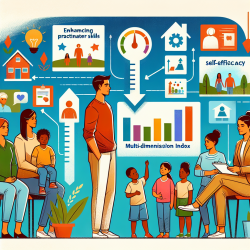Child sexual abuse (CSA) is a pervasive issue affecting children worldwide. Practitioners working in online therapy and special education settings often encounter the challenge of addressing this sensitive topic effectively. The research article "Child Sexual Abuse: Toward a Conceptual Model and Definition" by Mathews and Collin-Vézina (2019) provides valuable insights into creating a more robust understanding of CSA. By implementing the outcomes of this research, practitioners can enhance their skills and contribute to more effective interventions and policies.
Understanding the Need for a Conceptual Model
The article highlights the problems caused by the variance in definitions of CSA across different domains, including research, legal frameworks, prevention efforts, policy responses, and social norms. This lack of a shared understanding can hinder the ability of professionals to measure, treat, prevent, and respond to CSA effectively.
Key Dimensions of Conceptual Variance
The research identifies three major dimensions of conceptual variance in CSA definitions:
- Definition of the Construct: Variations in the child's age, the relationship with the abuser, and the element of sexual gratification.
- Definition of Acts: Differences in what acts constitute CSA, ranging from contact to non-contact acts.
- Consent: Variations in the presence and nature of consent in the definitions.
Developing a Conceptual Model
Mathews and Collin-Vézina propose a conceptual model of CSA that aims to provide a more theoretically sound understanding of the phenomenon. This model integrates insights from epidemiology, policy, social science, law, and developmental psychology. It focuses on the child's subjective experience of the acts and considers whether an act should be classified as CSA based on four key factors:
- The person must be a child.
- True consent must be absent.
- The acts must be sexual.
- The acts must constitute abuse.
Implications for Practitioners
Practitioners can benefit from this research by:
- Adopting a more precise and shared understanding of CSA, leading to more effective identification and intervention.
- Using the conceptual model to assess and classify acts and experiences as CSA, ensuring a consistent approach across different cases.
- Engaging in further research to refine and expand the conceptual model, contributing to a more comprehensive understanding of CSA.
Conclusion
By integrating the findings from this research, practitioners can improve their skills in addressing CSA, leading to better outcomes for children and their families. To read the original research paper, please follow this link:
Child Sexual Abuse: Toward a Conceptual Model and Definition.










